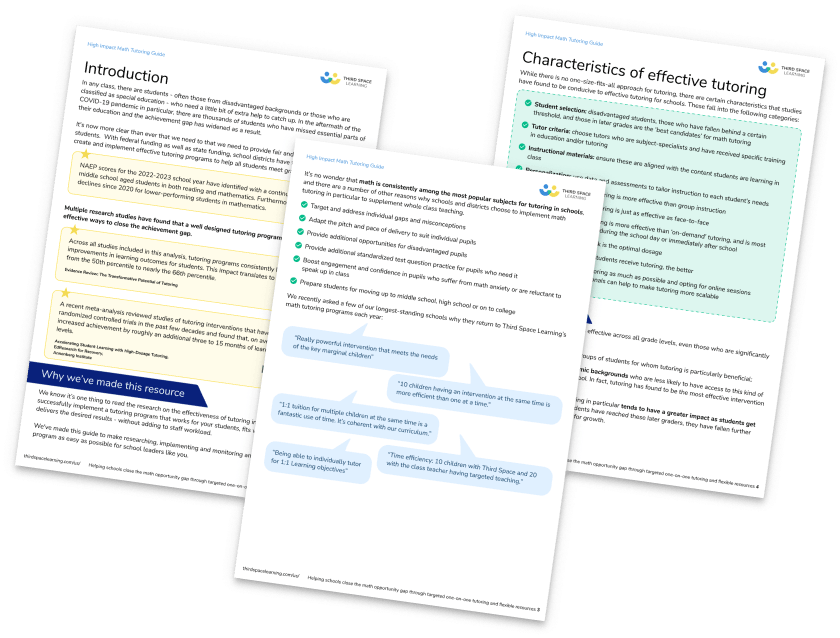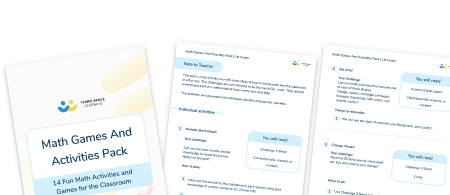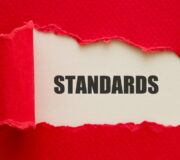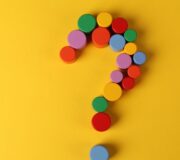1st Grade Math Curriculum Toolkit: Guidance, Tips, And Resources For Elementary Teachers
Teaching the first grade math curriculum is like entering a world of curiosity and rapid cognitive growth. First graders transition from intuitive to more structured thinking, they’re ready to move into foundational math concepts with enthusiasm.
From number sense to early problem-solving skills, you’ll discover how to lay a strong foundation for future mathematical success.
Their enthusiasm and openness to new experiences make the classroom a lively, exciting place for exploring mathematical practices.
This blog explores key curriculum areas and addresses common math misconceptions that often arise. Find resources and engaging enrichment activities that bring math to life.
1st grade math curriculum overview
This overview provides a concise look at the key domains and clusters within the 1st grade math curriculum. Here’s what students are expected to learn during their first year of formal math education.
Operations and Algebraic Thinking
- Represent and solve problems involving addition and subtraction
- Understand and apply properties of operations and the relationship between addition and subtraction
- Add and subtract within 20
- Work with addition and subtraction equations
Number and Operations in Base Ten
- Extend the counting sequence
- Understand place value
- Use place value understanding and properties of operations to add and subtract
Measurement and Data
- Measure lengths indirectly and by iterating length units
- Tell and write time
- Represent and interpret data
Geometry
- Reason with shapes and their attributes
14 Fun Math Games and Activities Pack for 1st Grade
14 fun math games and activities for 1st grade students to complete independently or with a partner.
Download Free Now!Understanding the 1st grade math curriculum in greater depth
The 1st grade math curriculum, in alignment with the Common Core State Standards and Standards for Mathematical Practice, concentrates on building a solid foundation in essential mathematical concepts and skills. This prepares students for more complex math in second grade and beyond. At this age, students are transitioning from simple number recognition to understanding the basics of addition, subtraction, place value, measurement, and geometry.
Challenges of the 1st Grade Math Curriculum
One of the biggest challenges in teaching 1st grade math is addressing and correcting common mathematical misconceptions and errors. Young learners often arrive with varying levels of math readiness, making it crucial to identify and support their unique needs effectively.
Here’s the 1st grade math curriculum in more detail. This section of the blog covers:
- Individual 1st grade math topics
- Common misconceptions
- How to support students in overcoming these misconceptions
As previously, references are to the Common Core, but the guidance, recommendations, and resources can be applied to your state standards.

Meet Skye, the voice-based AI tutor making math success possible for every student.
Built by teachers and math experts, Skye uses the same pedagogy, curriculum and lesson structure as our traditional tutoring.
But, with more flexibility and a low cost, schools can scale online math tutoring to support every student who needs it.
Find out moreOperations and Algebraic Thinking (1.OA)
Represent and solve problems involving addition and subtraction: Students must understand key terms in word problems and translate these into mathematical operations. They should be able to use visual aids or number sentences to help solve the problems.
- Common mistakes in representing and solving problems: Misunderstanding what the math problems are asking.
- How to correct this: Break down word problems by teaching students to underline important numbers and terms, and use visuals to aid understanding.
For example, draw 7 apples and cross out 3 to show subtraction.

Find more math problems for 1st graders here.
Understand and apply properties of operations and the relationship between addition and subtraction: Students need to know that the order of numbers in addition does not change the sum (commutative property). They should also be able to group numbers in different ways to simplify calculations (associative property).
- Common mistakes in understanding properties of operations: Misunderstanding the commutative property
For example, thinking 6 + 2 is different from 2 + 6
- How to correct this: Create hands-on activities to show that changing the order doesn’t affect the total.
For example, arrange 2 yellow counters and 6 purple counters in different orders and count the total.
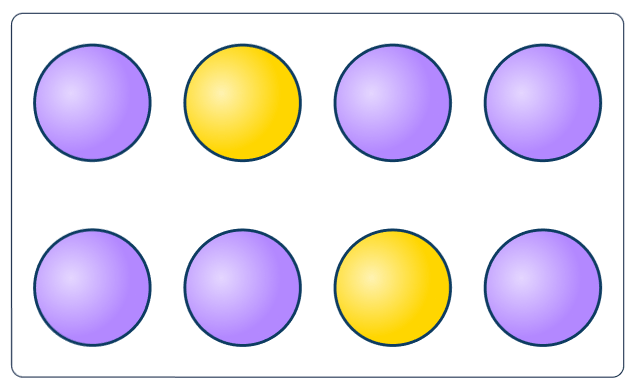
Add and subtract within 20: Students need to perform addition and subtraction within 20 quickly and accurately. They should understand strategies such as counting on, making ten, and decomposing numbers.
- Common mistakes in adding and subtracting within 20: Miscounting or skipping numbers during addition or subtraction.
For example, when adding the addends 4 + 3, the student starts counting from 4, saying ‘4,5,6,8 ’ skipping the 7 and getting the wrong answer.
- How to correct this: Practice counting by using frequent counting exercises, both forward and backward.
For example, use number lines for students to visually track their counting.

- Work with addition and subtraction equations: Students need to understand that the equal sign represents a balance between two sides. They should be able to determine if equations are true or false and solve for unknown numbers.
- Common mistakes in working with addition and subtraction equations: Misinterpreting the equal sign.
For example, seeing the equal sign as meaning “the answer comes next” rather than balance.
- How to correct this: Demonstrate equality by using balance scales to show that both sides must be equal.
Number and Operations in Base Ten (1.NBT)
Extend the counting sequence: Students need to fluently count to 120 from any starting point. They should also read and write numerals and represent numbers accurately.
- Common mistakes in extending the counting sequence: Students may skip numbers while counting, especially at decade transitions.
For example, skipping from 29 to 40 when counting numbers
- How to correct this: Practice with counting exercises such as activities and songs to emphasize sequence.
For example, count aloud while emphasizing transitions between decades.
Understand place value: Students need to recognize that each digit in a one-digit number and a two-digit whole number represents a specific value (tens or ones). They should be able to compare two-digit numbers using greater than, less than, and equal to symbols.
- Common mistakes in understanding place value: Misinterpreting the digits of a two-digit number.
For example, the student said the number 53 has 5 ones and 3 tens, instead of 5 tens and 3 ones.
- How to correct this: Show how digits in tens and ones places work with manipulatives using base ten blocks
For example, demonstrate that 23 has 2 ten-bars and 3 one-cubes.
Understand place value: Students need to recognize that each digit in a two-digit number represents a specific value (tens or ones). They should be able to compare two-digit numbers using greater than, less than, and equal to symbols.
- Common mistakes in understanding place value: Misinterpreting the digits of a two-digit number.
For example, the student said the number 53 has 5 ones and 3 tens, instead of 5 tens and 3 ones.
- How to correct this: Show how digits in tens and ones places work with manipulatives using base ten blocks
For example, demonstrate that 23 has 2 ten-bars and 3 one-cubes.
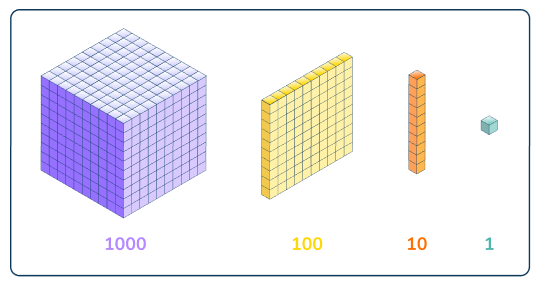
Use place value understanding and properties of operations to add and subtract: Students should understand and use place value concepts as mental math strategies to add and subtract numbers, including the ability to regroup (compose and decompose tens). They need to quickly calculate 10 more or 10 less mentally.
- Common mistakes in using place value to add and subtract: Misinterpreting how to combine tens and ones.
For example, putting the 4 from the tens place in the ones place when writing the number 42 using tens and ones.
- How to correct this: Use visual aids to break down addition and subtraction step-by-step
For example, show adding 23 + 17 by adding tens (20+10) and then ones (3+7) to get 40.
Measurement and Data (1.MD)
Measure lengths indirectly and by iterating length units: Students need to understand how to measure lengths using units, compare lengths indirectly, and describe lengths using appropriate units.
- Common mistakes in measuring lengths: Not starting the measurement from zero or misaligning the objects.
For example, instead of starting at the 0 mark on the ruler, they start on the 1 mark
- How to correct this: Create hands-on activities to provide opportunities to measure items using different tools, stressing alignment.
For example, measure classroom objects and ensure students start from the edge.
Tell and write time: Students need to read both analog and digital clocks accurately, understanding and distinguishing between the hour and minute hands. They should also recognize and express time in terms of hours and half-hours.
- Common mistakes in telling time: Students may confuse the functions of the hour and minute hands.
For example, thinking that the long hand tells us the hour
- How to correct this: Use consistent terminology by always referring to the hour and minute hands by their correct names while teaching time.
For example, “The short hand tells us the hour, and the long hand tells us the minutes.”
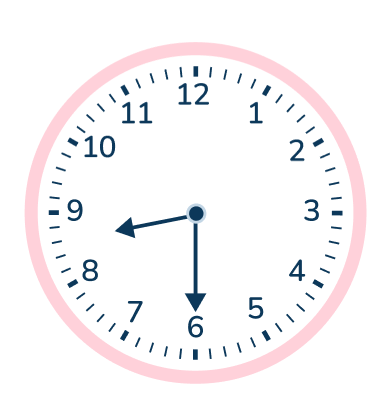
Represent and interpret data: Students should understand how to collect and categorize data, create simple graphs, and interpret data by answering questions comparing the categories.
- Common mistakes in representing and interpreting data: Misreading graphs: Confusion when interpreting data from graphs or charts.
For example, not understanding that the height of the bars in a bar graph shows the most populous option.
- How to correct this: Provide data handling and graphing exercises involving creating and interpreting simple bar graphs or pictographs.
For example, conduct a class survey and create a bar graph from the data collected.
Geometry (1.G)
Reason with shapes and their attributes: Students need to recognize and describe the defining attributes of two-dimensional shapes. They should be able to combine 2D shapes to form new ones and partition circles and geometric shapes into equal, smaller shares.
- Common mistakes in reasoning with shapes: Students might not understand which attributes define a shape.
For example, not understanding that the length of the sides of a shape is an important attribute to be able to define it.
- How to correct this: Engage students in activities where they sort different shapes by looking at the properties of shapes.
For example, provide cut-out shapes and have students sort them into groups of triangles, squares, etc.
Teaching problem-solving in 1st grade math
Problem-solving in 1st grade is essential as it helps build the foundation to think critically and reason mathematically. Teaching problem-solving and reasoning creates perseverance, boosts understanding, and builds confidence, preparing students for future mathematical challenges.
Here are some tips for teaching math strategies for problem-solving effectively, while also ensuring you deliver on the mathematical practices.
1. Make sense of problems and persevere in solving them
Encourage students to understand the problem fully before attempting to solve it. Teach them to break the problem into smaller parts and identify what is being asked.
- Use a “Think-Aloud” strategy: Solve a worked example problem out loud and model your thought process. This helps students visualize problem-solving and approach problems methodically.
- Implement a “Problem of the Day” routine: Have students tackle a new problem daily, gradually increasing the problem’s complexity. Encourage persistence and reward effort and strategies rather than just correct answers.
2. Reason abstractly and quantitatively
Help students think about what the numbers in the problem represent and how they relate to the real world. Foster their ability to transition smoothly between abstract numbers and their concrete representations.
- Use manipulatives: Provide counters, blocks, or drawings to help students visualize numbers. For example, when solving “If you have 5 counters and take away 2, how many are left?” use actual counters.
- Encourage storytelling: Ask students to create stories around the problems they are solving to help them understand the context of numbers and operations. For example, “Tell me a story where you have 7 candies and give 3 to a friend. How many do you have left?”
Read more: Concrete representational abstract (CPA) math
3. Construct viable arguments and critique the reasoning of others
Encourage students to explain their thinking and understand others’ viewpoints.
- Use “Math Talk” sessions: Have students explain their solutions to the class and field questions as this builds confidence and clarity in their reasoning.
- Pair discussions: Allow students to work in pairs and discuss their problem-solving process, creating collaborative learning and peer validation. For example, “Explain to your partner how you solved this problem and listen to their solution.”
4. Model with mathematics
Encourage students to use visual aids and math manipulatives to represent mathematical situations.
- Use drawing and diagrams: Teach students to draw pictures or diagrams to solve problems as this makes abstract problems more concrete. For example, when adding 4 and 3, draw 4 stars and then 3 more to visually count the total.
- Incorporate physical objects: Use tools like a number lines or a ten frame to model problems to help students understand relationships between numbers. For example, use a number line to show the steps in solving “6 + 2.”
5. Use appropriate tools strategically
Teach students to select and use mathematical tools effectively to facilitate problem-solving.
- Introduce different tools: Familiarize students with various tools like rulers, counters, number lines, clocks, etc. and explain how and when to use each tool. For example, use counters to solve an addition problem, and rulers to measure lengths.
- Practice tool selection: Promote strategic thinking by encouraging students to decide which tool would best help them solve a given problem. For example, ask, “Which tool would help you solve this problem?” and let students justify their choice.
6. Attend to precision
Emphasize the importance of accurate calculations and careful work.
- Double-check work: Encourage students to check their work for errors to build the habit of careful and precise work. For example, after solving, ask, “Can you count again to make sure your answer is correct?”
- Use clear language: Teach students to use correct mathematical terms and symbols to help them communicate their reasoning. For example, ensure they use terms like “sum” for addition and “difference” for subtraction correctly.
7. Look for and make use of structure
Help students recognize patterns and structures within math problems that can simplify their efforts.
- Highlight patterns: Use examples to show patterns in numbers and operations. For example, when adding multiples of ten, point out the pattern like 10 + 10, 20 + 10, etc.
- Use structured activities: Provide activities that emphasize the structure of math concepts. For example, use repeated addition to introduce the concept of multiplication.
8. Look for and express regularity in repeated reasoning
Encourage students to notice and articulate patterns in their problem-solving processes that can be applied to new situations.
- Use repetitive tasks: Give students similar problems to help them see patterns. For example, solve multiple problems like “4+3,” “5+3,” and “6+3” to recognize the pattern in adding 3 each time.
- Discuss patterns: Have students discuss patterns they notice during problem-solving to reinforce the concept of regularity in reasoning. For example, ask, “What do you notice every time we add 2 to a number?”
Enrichment Activities for 1st Grade Math
Enrichment activities are particularly beneficial for 1st graders as they provide a dynamic and engaging way to reinforce foundational math skills. At this stage, students learn best through play and hands-on experiences. Enrichment activities encourage active participation, making abstract concepts more tangible and understandable.
Each activity is designed to reinforce key mathematical concepts while providing a fun learning environment.
Operations and Algebraic Thinking
Addition and Subtraction Treasure Hunt
- Create a treasure hunt where students solve addition and subtraction problems to find clues.
- Place problem cards around the classroom, and students must solve each one to receive the next clue leading to the hidden “treasure.”
This activity makes math fun and engaging while reinforcing basic addition and subtraction skills.
Number and Operations in Base Ten
Number Line Hopscotch
- Draw a large number line on the floor and have students hop to demonstrate counting, adding, or subtracting.
- Call out a number, and students must hop to that position on the number line, then add or subtract based on instructions.
Physical activities help to reinforce the understanding of number sequences and place value.
Measurement and Data
Time Telling Games
- Use clock manipulatives to teach time-telling skills through games like “What Time Is It, Mr. Wolf?” where students move a certain number of steps based on the time called out.
Interactive games help students practice reading both analog and digital clocks in a fun, engaging manner.
Geometry
Shape Sorting Station
- Set up a station with a variety of shape cutouts, and have students sort them into categories like triangles, squares, circles, and rectangles.
- Provide sorting mats labeled with each shape to guide students.
Hands-on activities like this reinforce shape recognition and classification skills.
Why We Love Teaching the 1st Grade Math Curriculum
Teaching 1st grade math is an adventure filled with discovery and joy. These young learners are at a unique stage where every new concept feels like a revelation. Their enthusiasm and openness to new experiences make the classroom a lively, exciting place.
At this age, children are developing essential social skills alongside academic knowledge. The math they learn lays the groundwork for future grade levels.
Integrating math into everyday activities makes concepts tangible and relatable.
Remember, 1st graders thrive on positive reinforcement. Celebrate their successes, no matter how small, and watch their curiosity and enthusiasm for math grow.
1st grade math curriculum FAQs
In 1st grade, students build foundational math skills that set the stage for future learning. The curriculum focuses on developing a strong number sense, understanding basic addition and subtraction, and exploring early concepts of geometry and measurement. According to the Common Core State Standards, first graders are expected to achieve fluency in addition and subtraction within 20, work with numbers up to 120, and understand simple place value concepts.
First grade mathematics covers several key topics according to the Common Core State Standards:
1. Operations and Algebraic Thinking:
Represent and solve problems involving addition and subtraction.
Understand and apply properties of operations and the relationship between addition and subtraction.
Add and subtract within 20.
Work with addition and subtraction equations.
2. Number and Operations in Base Ten:
Extend the counting sequence.
Understand place value.
Use place value understanding and properties of operations to add and subtract.
3. Measurement and Data:
Measure lengths indirectly and by iterating length units.
Tell and write time.
Represent and interpret data.
4. Geometry:
Reason with shapes and their attributes.
According to the Common Core State Standards, first graders are introduced to the basic concept of fractions, but their understanding is focused primarily on part-whole relationships with simple shapes rather than numerical fractions.
First graders learn to partition circles and rectangles into two and four equal shares. They use this as an opportunity to understand fractions as parts of a whole.
They should be able to describe these shares using the terms halves, fourths, and quarters and understand that decomposing a whole into equal parts creates smaller shares.
For example: Students may divide a circle into two equal parts and understand each part is called a half.
While first graders do not work with fractions in numerical form (like frac{1}{2} or frac{1}{4}), these activities lay the groundwork for understanding more complex fractions in later grades.
Do you have students who need extra support in math?
Skye—our AI math tutor built by experienced teachers—provides students with personalized one-on-one, spoken instruction that helps them master concepts, close skill gaps, and gain confidence.
Since 2013, we’ve delivered over 2 million hours of math lessons to more than 170,000 students, guiding them toward higher math achievement.
Discover how our AI math tutoring can boost student success, or see how our math programs can support your school’s goals:
– 3rd grade tutoring
– 4th grade tutoring
– 5th grade tutoring
– 6th grade tutoring
– 7th grade tutoring
– 8th grade tutoring
